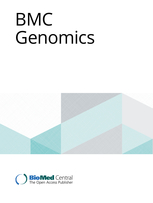Ver ítem
- xmlui.general.dspace_homeCentros Regionales y EEAsCentro Regional Santa FeEEA RafaelaArtículos científicosxmlui.ArtifactBrowser.ItemViewer.trail
- Inicio
- Centros Regionales y EEAs
- Centro Regional Santa Fe
- EEA Rafaela
- Artículos científicos
- Ver ítem
Predicting male fertility in dairy cattle using markers with large effect and functional annotation data
Resumen
Background: Fertility is among the most important economic traits in dairy cattle. Genomic prediction for cow fertility has received much attention in the last decade, while bull fertility has been largely overlooked. The goal of this study was to assess genomic prediction of dairy bull fertility using markers with large effect and functional annotation data. Sire conception rate (SCR) was used as a measure of service sire fertility. Dataset consisted of
[ver mas...]
Background: Fertility is among the most important economic traits in dairy cattle. Genomic prediction for cow fertility has received much attention in the last decade, while bull fertility has been largely overlooked. The goal of this study was to assess genomic prediction of dairy bull fertility using markers with large effect and functional annotation data. Sire conception rate (SCR) was used as a measure of service sire fertility. Dataset consisted of 11.5 k U.S. Holstein bulls with SCR records and about 300 k single nucleotide polymorphism (SNP) markers. The analyses included the use of both single-kernel and multi-kernel predictive models fitting either all SNPs, markers with large effect, or markers with presumed functional roles, such as non-synonymous, synonymous, or non-coding regulatory variants.
Results: The entire set of SNPs yielded predictive correlations of 0.340. Five markers located on chromosomes BTA8, BTA9, BTA13, BTA17, and BTA27 showed marked dominance effects. Interestingly, the inclusion of these five major markers as fixed effects in the predictive models increased predictive correlations to 0.403, representing an increase in accuracy of about 19% compared with the standard model. Single-kernel models fitting functional SNP classes outperformed their counterparts using random sets of SNPs, suggesting that the predictive power of these functional variants is driven in part by their biological roles. Multi-kernel models fitting all the functional SNP classes together with the five major markers exhibited predictive correlations around 0.405.
Conclusions: The inclusion of markers with large effect markedly improved the prediction of dairy sire fertility. Functional variants exhibited higher predictive ability than random variants, but did not outperform the standard whole-genome approach. This research is the foundation for the development of novel strategies that could help the dairy industry make accurate genome-guided selection decisions on service sire fertility.
[Cerrar]

Autor
Nani, Juan Pablo;
Rezende, Fernanda M.;
Peñagaricano, Francisco;
Fuente
BMC Genomics 20 : 258 (April 2019)
Fecha
2019-04
Editorial
BMC
ISSN
1471-2164
Formato
pdf
Tipo de documento
artículo
Palabras Claves
Derechos de acceso
Abierto
 Excepto donde se diga explicitamente, este item se publica bajo la siguiente descripción: Creative Commons Attribution-NonCommercial-ShareAlike 2.5 Unported (CC BY-NC-SA 2.5)
Excepto donde se diga explicitamente, este item se publica bajo la siguiente descripción: Creative Commons Attribution-NonCommercial-ShareAlike 2.5 Unported (CC BY-NC-SA 2.5)


